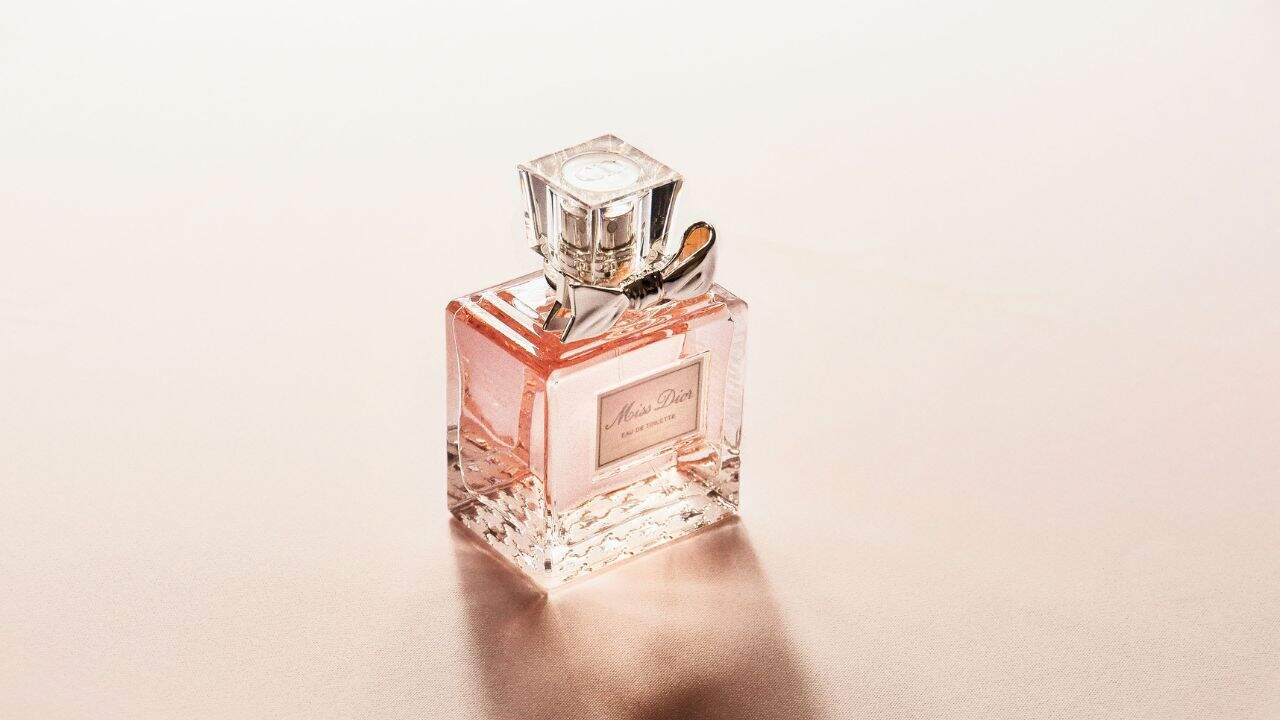Why Does Perfume Give Me a Headache? Here’s How to Treat It

The classic “perfume headache” is a familiar frustration. It’s disheartening when something meant to bring joy instead brings discomfort. Rest assured, this experience is common, and there’s plenty to uncover.
This guide will dive into the intricate world of why certain scents can turn a pleasant sniff into a pounding headache, and crucially, what can be done about it. This isn’t just about avoiding a trigger; it’s about reclaiming the enjoyment of scent and finding equilibrium. Ready to decode the mystery?
Why Does Perfume Give You a Headache? Unmasking the Olfactory Offenders
It’s a common complaint, often dismissed as simply “being sensitive,” but there’s real science behind why some perfumes can trigger headaches, even full-blown migraines. It’s not just “strong” perfumes; often, it’s the specific ingredients or the way they interact with unique physiology.
Let’s break down the primary culprits:
1. Volatile Organic Compounds (VOCs): The Invisible Irritants
Many perfumes, especially conventional ones, contain Volatile Organic Compounds (VOCs). These are chemicals that easily vaporize at room temperature, releasing those scent molecules into the air. While responsible for the fragrance, certain VOCs can act as irritants to the respiratory and nervous systems.
When inhaled, these compounds can stimulate the nerve system in the brain associated with head pain. For some individuals, this irritation can lead to:
- Sinus inflammation and pressure
- Dilation of blood vessels in the brain
- Direct stimulation of pain receptors
This isn’t an allergic reaction in the traditional sense for everyone, but rather an irritant response. Think of it like being in a room with harsh cleaning chemicals – even if there’s no “allergy” to them, the fumes can still cause discomfort.
2. Specific Aroma Chemicals: The Usual Suspects
While many ingredients contribute to a perfume, some specific aroma chemicals are frequently flagged as headache triggers. These often include:
- Synthetic Musks: Common in “clean laundry” or “skin scent” fragrances, these can be particularly problematic for some.
- Aldehydes: Found in classic, effervescent fragrances, they can have a sharp, waxy quality that some find overwhelming.
- Certain White Florals: Notes like jasmine, tuberose, and gardenia, while beautiful, contain potent compounds that can be intense.
- Heavy Woody or Amber Notes: Ingredients like patchouli, oud, and certain amber accords can be dense and persistent, overwhelming the olfactory system.
- Sweet/Gourmand Notes: Overly sweet or artificial vanilla, caramel, and fruity notes, especially when paired with synthetic fixatives, can be cloying.
Identifying specific triggers can be tricky, as perfumes are complex blends. It’s like finding a needle in a haystack of delightful aromas. However, keeping a scent diary can help pinpoint common notes across fragrances that cause trouble.
3. Olfactory Hypersensitivity (Osmophobia)
For many who experience perfume headaches, especially those prone to migraines, there’s often a heightened sensitivity to smells known as osmophobia. This isn’t just disliking a scent; it’s a genuine aversion where odors can induce or worsen a headache, nausea, or even light/sound sensitivity. It’s a common symptom associated with migraine attacks, meaning the brain’s olfactory and pain systems are simply more reactive to certain stimuli.
4. Over-Exposure and Poor Ventilation
Sometimes, it’s not the perfume itself, but how or where it’s worn. Applying too much, or being in an enclosed space with a heavily fragranced person, can simply overwhelm senses. The nose is designed to adapt, but constant, high-level stimulation can lead to sensory overload, triggering discomfort. Imagine trying to hear a quiet whisper in a rock concert – the ears would protest!
My Head’s Pounding! How to Treat a Perfume-Induced Headache
Okay, the headache has struck. What now? Don’t panic! Here’s how to manage the discomfort:

- Escape the Scent: This is paramount. Immediately move away from the source of the offending fragrance. Go to a well-ventilated area or step outside for fresh air. If wearing the perfume, try to wash it off skin or change clothes if the scent has transferred.
- Fresh Air & Ventilation: Open windows, turn on a fan, or go for a short walk outside. Dispersing the fragrance molecules from the environment is key.
- Hydrate: Dehydration can exacerbate headaches. Drink a large glass of water. Herbal teas like peppermint or ginger tea can also offer soothing relief due to their natural anti-inflammatory properties.
- Cool Compress: Apply a cold pack or a cool, damp cloth to the forehead or the back of the neck. The reduced temperature can help constrict blood vessels and alleviate throbbing.
- Rest in a Dark, Quiet Place: If possible, lie down in a dimly lit, quiet room. Reducing sensory input can help calm the nervous system.
- Over-the-Counter Pain Relievers: For mild to moderate headaches, medications like ibuprofen, acetaminophen, or naproxen can help manage the pain. Always follow dosage instructions.
- Aromatherapy Relief (Carefully!): While paradoxically, some essential oils can help when a synthetic fragrance is the trigger. Lightly dabbing a diluted peppermint or lavender essential oil on temples (patch test first!) can provide a cooling, calming effect. Be very mindful of which oils to use, as some can be triggers themselves.
Prevention is Your Best Perfume: Avoiding Future Headaches
The best defense is a good offense! Here’s how to minimize the chances of a perfume-induced headache:
1. Be Your Own Perfume Detective: Identify Triggers
- Scent Diary: Keep a small notebook. When a perfume gives a headache, write down the name, notes (if known), and how it felt. Over time, patterns might emerge – perhaps a reaction to heavy musks, or specific floral accords.
- “Fragrance” on the Label: Be cautious of products that simply list “fragrance” or “parfum” as an ingredient. This often signifies a complex blend of synthetic chemicals, some of which could be a trigger.
- Patch Test: Before committing to a new fragrance, spray a tiny amount on a blotter strip or a small, non-sensitive area of skin (like an inner elbow) and observe any reaction over a few hours.
2. Embrace “Clean” and “Hypoallergenic” Fragrances
The beauty industry is evolving! Many brands are now prioritizing “clean” formulations, meaning they avoid common allergens and irritants. Look for:

- “Fragrance-Free” or “Unscented”: For all other personal care products (laundry detergent, shampoo, lotions). This reduces the overall chemical load.
- Hypoallergenic Perfumes: These are specifically formulated to reduce the risk of allergic reactions and sensitivities. They often use fewer synthetic ingredients and focus on natural, gentler components.
- Natural Perfumes: Made with essential oils, absolutes, and natural isolates derived from plants. These can be a fantastic alternative, offering complex aromas without many of the synthetic compounds found in conventional perfumes.
3. Application Matters: Less is Often More
- Targeted Application: Apply perfume to pulse points (wrists, behind the ears, base of the neck) but avoid spraying directly onto the chest or near the face, where the scent is constantly wafting into the nose.
- The “Walk Through” Method: For very potent scents, spray a single spritz into the air and walk through the mist. This disperses the scent more lightly.
- Hair & Clothing: Some people find that spraying perfume on hair or clothes (patch test for staining!) allows the scent to diffuse more slowly and away from direct inhalation.
- Less is More: Start with one spray. More can always be added later if needed, but it can’t be removed once applied.
4. Optimize Your Environment
- Ventilation at Home & Work: Ensure good airflow in living and working spaces. If a colleague’s perfume is bothersome, a small desk fan pointed away can help disperse the scent.
- Communicate: Politely inform close friends, family, and colleagues about fragrance sensitivities. Most people are understanding when they know it’s a health issue, not just a preference.
Your Journey to Scent Freedom
Navigating the world of fragrance when prone to headaches can feel daunting, but it doesn’t mean abandoning scent entirely. By understanding the “why” behind reactions and adopting preventative strategies, perfumes can be found that truly enhance the day, rather than detract from it.
Remember, every individual’s sensitivity is unique. By becoming an active participant in understanding the body’s responses, a world of beautiful, headache-free aromas can be unlocked. Embrace the power of knowledge, listen to your body, and step into a fragrant future where joy, not pain, is the dominant note.
Ready to find your perfect, headache-friendly fragrance? Explore a curated selection of hypoallergenic and natural perfumes designed for sensitive souls. Shop gentle scents now and experience fragrance freedom!

